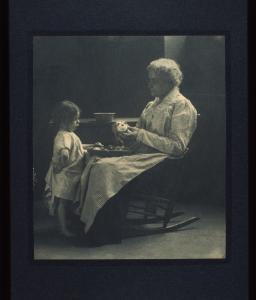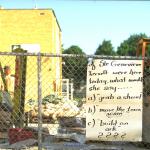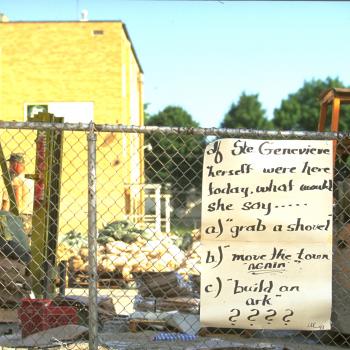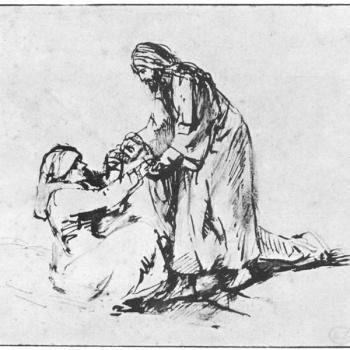
Almost nobody I knew was a “stay-at-home-mom.” I don’t believe I even heard the term until I was at least ten years old. Of course, I knew there were ladies who stayed in their homes–grandmothers. Both of mine were always at home. One was a farmer’s wife, with all the unique toil that entails. The other did things like stitch fancy quilts and bake pies for a local restaurant. But the mothers of my friends, they were postmistresses and piano teachers, nurses and newspaper photographers, butchers and bus drivers. None of them seemed to have “careers” (another word with which I wasn’t familiar). They had work, jobs, vocations. They worked out of necessity, another income to keep the family running, but also because work was something every adult did. The idea that one would not work doing something out in the community seemed unthinkable.
But work was different, in Green Ridge and in all the little towns like it.
In my early childhood it seemed someone was always at home, or only a few steps away. My father, a farmer, was in and out all day. Home to get a sandwich or a soda, out again and down to the farm, back again for supper, out again if a problem occurred. My mother, a teacher, had less than five minutes’ drive to the local high school. She was home in time for Jeopardy at 3:30. She was home all summer. In between times, a local lady came to watch my sister and I at our house. Sometimes, she piled us into her ancient white Buick and drove us to her trailer, where she lived on her brother-in-law’s farm. There were people home there too. Her husband, a disabled veteran who mowed the cemetery for money. Her sister, a lunch lady, home by the afternoon.
We weren’t unique. My best friend’s mother ran a butcher shop just down the street from their house, on her grandparents’ farm. Her father was a boat pilot, home at odd hours. If her parents were busy, she walked over to Grandma’s or helped in the shop. Another friend’s dad worked for the county “road crew.” Her mom was a bus driver for the school district. They were home between jobs and routes. Some kids, of course, had a parent who commuted–a carpenter or nurse or dental hygienist. But someone was always home for them. If not mom or dad, grandma or grandpa or Aunt So-and-So. I don’t recall that there were any real daycares.
By and large, we were not rich. When we were small, most of us were probably poor. We lived in old rented farmhouses and double-wide trailers. We drank cistern water and ate a lot of canned food. Most of our wardrobes were cousin hand-me-downs. We got one pair of tennis shoes per school year, and wore them until they were full of holes. Our folks saved up for years to go on vacations any fancier than Montauk State Park. But as we grew, we watched our parents get better cars, put up houses, and afford to take us to the beach or buy us clothes from the mall or send us on the class trip to Washington, D.C.
This steady and gradual success was the result of all of their hard work. It was also the result of having people at home: a hyperlocal support network based on kinship and job flexibility, with care work for children at its heart. This network was run by the elderly an the childless: grandparents, aunts, teenage babysitters. It was further supported and facilitated by flexible jobs, self-employment, and close proximity between work and home. This unique combination allowed most families to avoid the costs of institutional daycare and after-school care. Children and parents enjoyed more frequent contact with their families, often in their own homes. Grandparents and other elders got to spend more time with young children, and people of working age got to spend more time on home and social pursuits. The end result was tight-knit families in a close community where adults married young and started poor but were able to achieve financial success over a period of years.
The Catholic “mom wars” are foreign to me. Our community was, and still is, almost completely Catholic. But there were no epic battles between “staying at home” or “having a career.” There were no bright lines. Everyone worked, everyone was at home, everyone was nearby. Three decades later, this way of life might seem like a pipe dream, especially for those who are disconnected from their extended kin. But I think it deserves a deeper look and serious reflection. How can we create local support structures that benefit children and families? What sacrifices can employers and families make for the steady, gradual success of a community? How can we promote and facilitate people at home?












